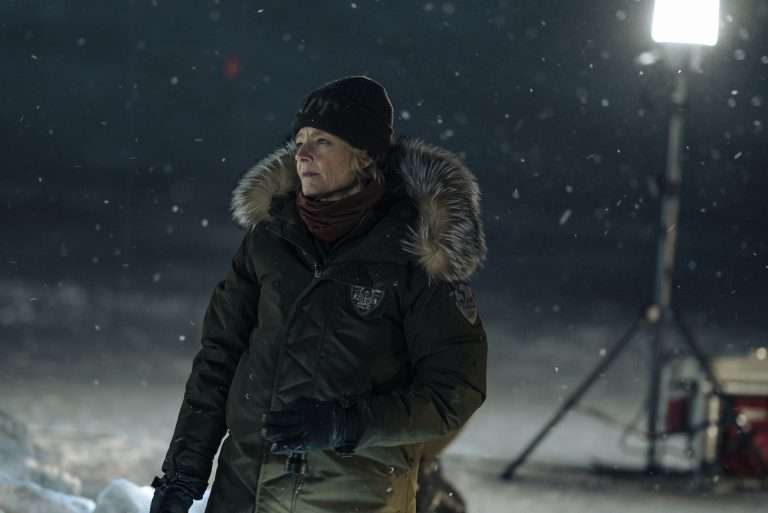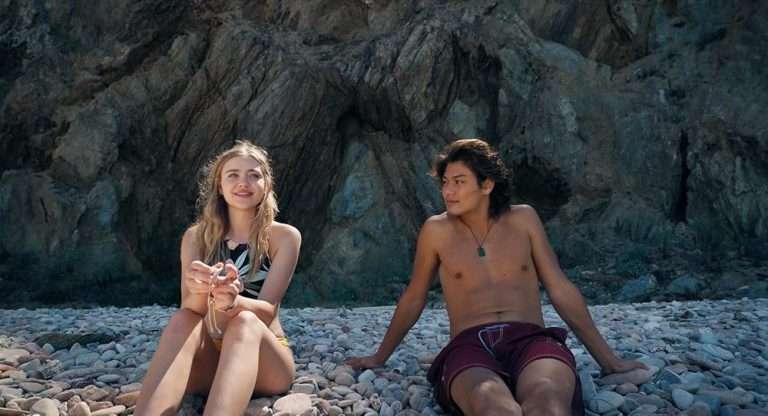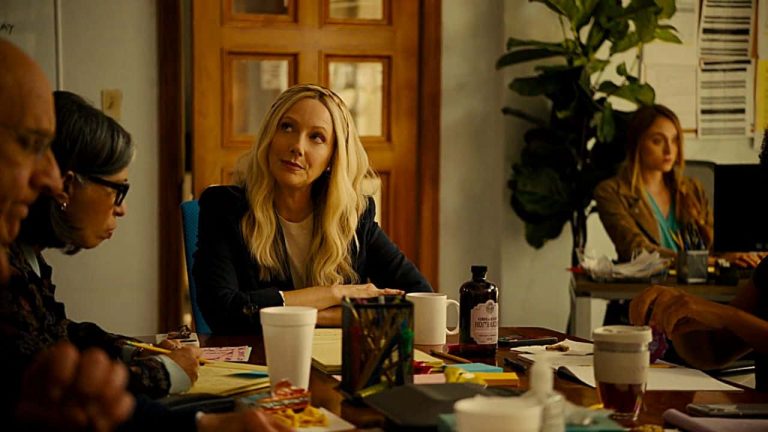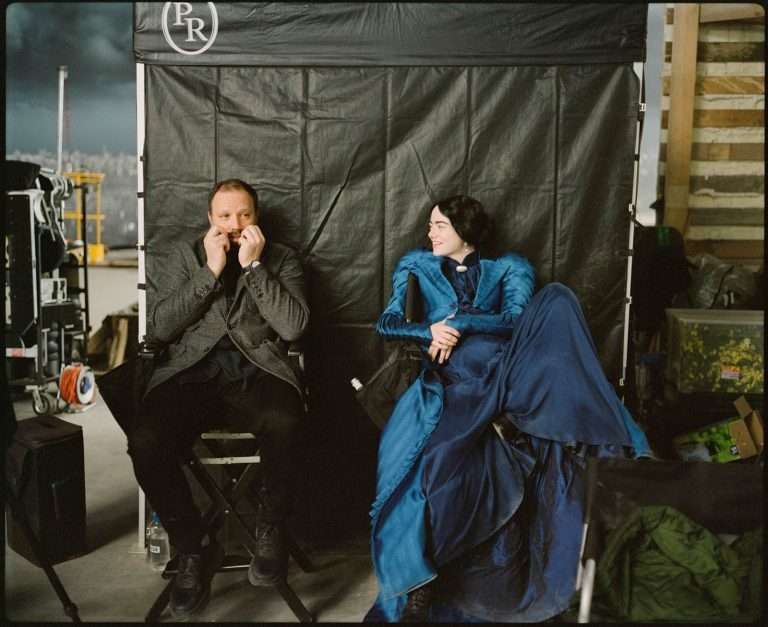The Worst Ones (2022) Movie Review: In The Worst Ones, directors Lise Akoka and Romane Gueret use self-reflexivity as their biggest tool. The film gestures to all what transpires when a film production is sourcing street kids from a working-class neighborhood i.e., Picasso housing project in a small French town and goes to shoot with them. From auditions of hundreds, few teenagers are chosen, with the most rundown pasts and circumstances, whose real life stories often deliberately meld with the fictional portraits they are supposed to play.
The film does not cue us immediately to the moment when the boundaries between the two break down. There is a constant osmosis, one feeding into the other, as questions about the act and responsibility tied to representability, the limits of authenticity and the outcomes of such experiences upon the subjects’ real lives are posed in ways that occasionally verge on the unsubtle. Akoka and Gueret are not shy of making their thematic interests excessively clear, even as they examine their own roles and biases while making this film.
The film circles mostly around four teenagers and kids. There is Jessy, who’s barely out of detention for a hit and run; Lily, who’s recently lost her younger brother to cancer and has herself experienced extreme slut shaming, her story often entwining with Jessy’s. Jessy and Lily are to play lovers in the film. Their off-screen relationship is laced with Jessy’s tirades and taunts, poking her about supposed promiscuity. He embodies a rough virulent masculinity or tries to, especially when among his peers and friends, but we also sense traces of softness and a deep, sad, cutting vulnerability when he is solely with Lily under the director, Gabriel’s watch.
The kid, Ryan, has anger issues, prone to outbursts, who lives with his sister, having moved away from his mother due to her crippling mental health and heedless inclinations. Lily finds a shadow of her dead brother in Ryan. She tries her best to develop a bond with Ryan. Ryan initially deflects her attempts but gradually comes to trust her as the shoot proceeds further.
The film production in progress is based on a script that is improvisatory and geared to incorporating the actors’ real life experiences. Gabriel plants scenes and adopts an approach that is showy in its consideration of and empathizing with the actors’ needs and wants. He projects his sincere interest in the actors beyond the film requirements often times too much. He tells his actors before filming a sex scene that they should voice their disagreements and discomfort anytime.
But he also borders on the inappropriate when he asks them to share their most intimate experiences with him in the most random, sudden manner. The production clearly cannot afford an intimacy coach and Gabriel gives free rein to the actors to enact the sex scene, offering vague instructions that are unmindful of boundaries that he himself preached about. The scene provokes us to think of the skewed power dynamics between a director and cast members, the latter whom can be pushed into extractive extremes in the guise of delivering performances of honesty and truth.
In its concerted meta-ness, The Worst Ones wants to engage with the interface between fiction and reality in ways that can illuminate the regurgitation of stereotypes fiction’s subjects might be made to pander to. Does a portrait of their real life situation, twisted around with some artistic license, hold capacity of liberation or does it enforce the myth the subjects have to live with even more direly? Akoka and Gueret nudge the viewer into the grounds of fiction’s afterlife very directly through a scene between the film’s production assistant and the moneyed members of the neighborhood, who, they claim, are working towards altering the established image of their locality so as to bring in more privileged, well to do outsiders who can take up housing.
Reinforcement of the image in the film they are making might drive outsiders away furthermore, they argue. We sense vast measures of elitism and indifference couched in the neighbors’ argument. As they attack the assistant as to why only the most decrepit hoodlum kids are in the film, foisting an image that is undesirable for the neighborhood, the latter reminds them the selected kids were cast out of scores of auditions that included their own kids.
While Akoka and Gueret seem to nod to their own complicity and larger role in constructing and mounting a film based on what appears to surf on poverty stereotypes, there is no denying The Worst Ones sometimes suffers from over familiarity which is a shame because the young actors are superlative and manage to touch something very raw and personal. As Lily, Mallory Wanecque is the film’s standout, taking a cinematically tired ground of a character dealing with slut shaming, personal loss, with an affinity for self-destructive attitudes and growing a liking for a crew member resulting in inevitable devastation, elevating these to the stuff of absolute revelatory unaffectedness. She carries her character’s waywardness, drifting-ness through life with a shattering earnestness.
One wishes however the screenplay was bolder and riskier in tackling this fairly conventional narrative route, which is why despite Wanecque’s valiant efforts, the punch in the gut, the ache in the finality of the climactic moment, does not hit us as severely. The film also starts to accumulate some tepidity on account of the perceptible artifice of few particular moments in these characters’ real lives which do not seem to offer us any depth of insight or a sharper understanding.
There is also a lot of stress on the specific Picasso housing project but the setting isn’t etched out enough to make us care for the complex inter-social networks within which the characters are trapped by force of character slotting or unavailability of alternative living trajectories to take recourse to. At one point, the director in the film is trying to work up Ryan into a fit of anger; Ryan laughs it off constantly.
As they go at the scene again and again, the characters inevitably tip over into wrenching out emotions from their real lives. The brawl turns nasty while the viewer struggles to comprehend the limits to which one can push an actor often hurting them in the process. Akoka and Gueret plumb the scene with genuine bitterness and a scalding sense of ache. There are no half measures in the film.
We are made to feel intense, disturbed emotions and the design of the film alerts us to the politics of entwining the fiction with the real, constructed with the kernel of truth. The film unsettles us because of how it broaches the range and scope of culling from our everyday moments and episodes of cathartic or violent aesthetic invention.




![Once Upon a Time in Calcutta [2021]: ‘Venice’ Review – A Nuanced and Intimate Portrait of Urban Decay and Metamorphosis](https://79468c92.delivery.rocketcdn.me/wp-content/uploads/2021/09/Once-Upon-A-Time-In-Calcutta-2021-768x432.jpg)




